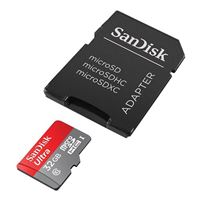Samsung Begins Mass Manufacturing of Ninth Expertise V-NAND: 1Tb 3D TLC NAND
Samsung Electronics has started mass manufacturing of its Ninth expertise of V-NAND memory. The first dies based totally on their latest NAND tech can be found in a 1 Tb functionality using a triple-level cell (TLC) construction, with info change costs as extreme as 3.2 GT/s. The model new 3D TLC NAND memory will initially be used to assemble high-capacity and high-performance SSDs, which is ready to help to solidify Samsung’s place throughout the storage market.
Diving correct in, Samsung is conspicuously avoiding to itemizing the number of layers of their latest expertise NAND, which is the principle driving take into consideration rising functionality generation-on-generation. The company’s current eighth gen V-NAND is 236 layers – similar to its essential opponents – and phrase on the street is that Ninth gen V-NAND ups that to 290 layers, though this stays to be confirmed.
Regardless, Samsung says that its Ninth expertise V-NAND memory boasts an approximate 50% enchancment in bit density over its eighth expertise predecessor. Driving this optimistic elements, the company cites the miniaturization of the cell dimension, along with the blending of enhanced memory cell utilized sciences that reduce interference and lengthen the lifespan of the cells. With their latest NAND experience, Samsung has moreover been able to do away with dummy channel holes, thus lowering the planar house of the memory cells.
Apparently, proper now’s announcement moreover marks the first time that Samsung has publicly confirmed their use of string stacking of their NAND, referring to it as their “double-stack development.” The company is broadly believed to have been using sting stacking once more of their eighth expertise NAND as properly, nonetheless this was in no way confirmed by the company. Regardless, the utilization of string stacking is barely going to increase from proper right here, as distributors look to take care of together with layers to their NAND dies, whereas manufacturing variability and channel hole tolerances make it powerful to provide better than 150-200 layers in a single stack.
| Samsung TLC V- NAND Flash Memory | ||
| Ninth Gen V-NAND | eighth Gen V-NAND | |
| Layers | 290? | 236 |
| Decks | 2 (x145) | 2 (x118) |
| Die Functionality | 1 Tbit | 1 Tbit |
| Die Dimension (mm2) | ?mm2 | ?mm2 |
| Density (Gbit/mm2) | ? | ? |
| I/O Tempo | 3.2 GT/s (Toggle 5.1) |
2.4 GT/s (Toggle 5.0) |
| Planes | 6? | 4 |
| CuA / PuC | Certain | Certain |
Speaking of channel holes, one different key technological enhancement throughout the Ninth gen V-NAND is Samsung’s superior ‘channel hole etching’ experience. This course of improves manufacturing productiveness by enabling the simultaneous creation of electron pathways inside a double-stack development. This method is important as a result of it permits surroundings pleasant drilling by additional layers, which is increasingly very important as cell layers are added.
The most recent V-NAND moreover choices the introduction of a sooner NAND flash interface, Toggle DDR 5.1, which boosts peak info change costs by 33% to a few.2 GT/s, or practically 400MB/sec for a single die. Furthermore, Ninth gen V-NAND’s power consumption has been diminished by 10%, in accordance with Samsung. Though Samsung doesn’t state beneath what conditions – presumably, that’s at iso-frequency comparatively than max frequency.
Samsung’s launch of 1Tb TLC V-NAND is able to be adopted by the discharge of a quad-level cell (QLC) model later this 12 months.
“We’re excited to ship the commerce’s first Ninth-gen V-NAND which is ready to ship future functions leaps forward,” said SungHoi Hur, Head of Flash Product & Experience of the Memory Enterprise at Samsung Electronics. “To have the ability to sort out the evolving desires for NAND flash choices, Samsung has pushed the boundaries in cell construction and operational scheme for our next-generation product. By the use of our latest V-NAND, Samsung will proceed to set the event for the high-performance, high-density solid-state drive (SSD) market that meets the desires for the approaching AI expertise.”





